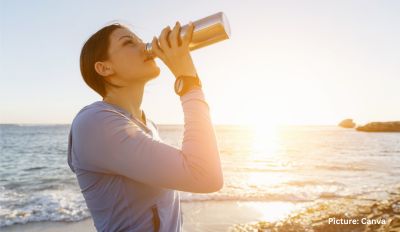Understanding your body’s water needs can be tricky, especially during periods of extreme heat. With sweat working overtime to keep us cool, our bodies demand more water to stave off dehydration. Neglecting this essential need can result in fatigue, blood pressure spikes, and irregular heart rhythms.
The ubiquitous advice to drink eight glasses of water a day, each containing 8 ounces, has long been a staple. Referred to as the “eight-by-eight” rule, it suggests consuming 64 ounces of water daily. However, this guideline lacks scientific grounding and may not suit everyone’s hydration requirements.
While some adhere faithfully to this rule, it’s important to recognize its origins are more tradition than science. Although consuming 64 ounces of water daily isn’t harmful, it might not suffice for some individuals.
While the eight-by-eight guideline is prevalent, it’s far from the only recommendation. The absence of a universal consensus on daily water intake underscores the individual variability in hydration needs.
An “adequate intake” of water exists for adults, though it fluctuates among individuals. This includes fluids from sources beyond water, such as milk, sports drinks, tea, and even coffee, as well as water-rich foods like fruits and vegetables. For men, this intake is around 15.5 cups (3.7 liters or 125 ounces), while for women, it’s approximately 11.5 cups (2.7 liters or 91 ounces). Nevertheless, these figures remain general, subject to personal variation based on several factors.
Certain circumstances warrant higher water consumption:
– Active Jobs:Occupations demanding physical activity, especially outdoors, necessitate increased water intake to replenish lost fluids and electrolytes.
– Regular Exercise:Even without a physically demanding job, individuals engaging in frequent exercise, whether at the gym or through recreational activities, should augment their water intake to compensate for fluid loss.
– Hot Climates:Elevated temperatures lead to more sweating, accentuating the need to replace lost fluids. Dry environments exacerbate fluid loss, making hydration particularly crucial in desert regions.
– Pregnancy and Breastfeeding:Expectant and breastfeeding individuals require additional water to support physiological processes vital for their health and that of their baby.
Various hydration strategies exist, offering diverse approaches:
– Thirst as a Guide:Some advocate drinking when thirsty, though opinions vary on its efficacy, with concerns that thirst may signal dehydration.
– Scheduled Intake:Structuring water consumption around meals can establish a hydration routine, though its effectiveness may vary depending on meal frequency.
– Eight Glasses a Day:While convenient, this rule overlooks individual differences in hydration needs, potentially resulting in under or overhydration.
– Half Your Body Weight in Ounces:This straightforward guideline adjusts water intake based on body weight, yet overlooks other crucial factors like activity level and climate.
Ultimately, finding the right hydration strategy involves experimentation. Monitoring signs of dehydration, such as fatigue or headaches, and observing urine color can help gauge hydration levels effectively.











